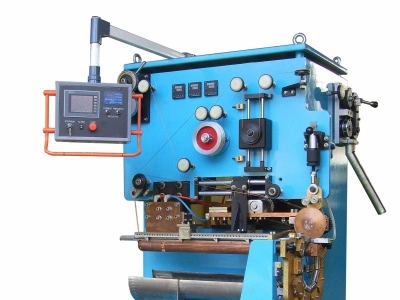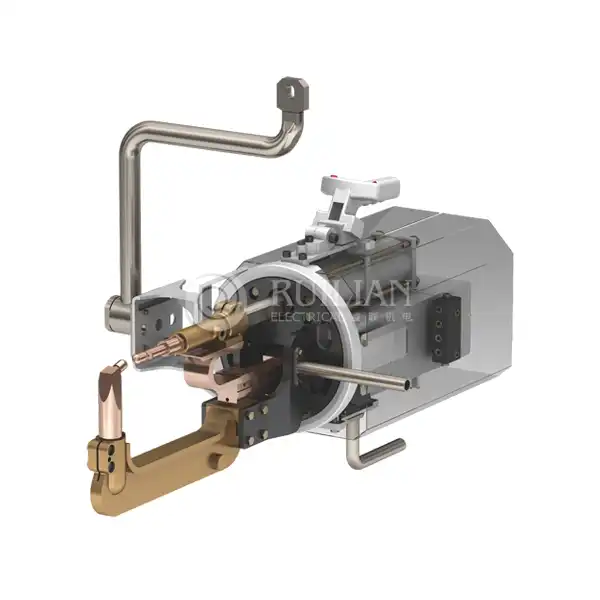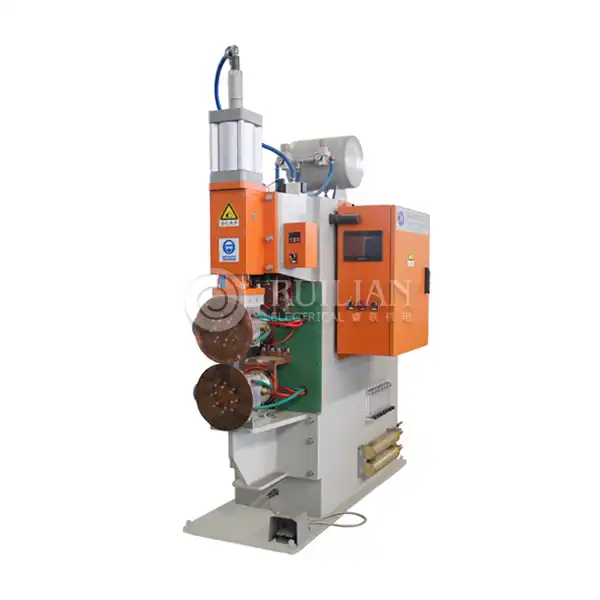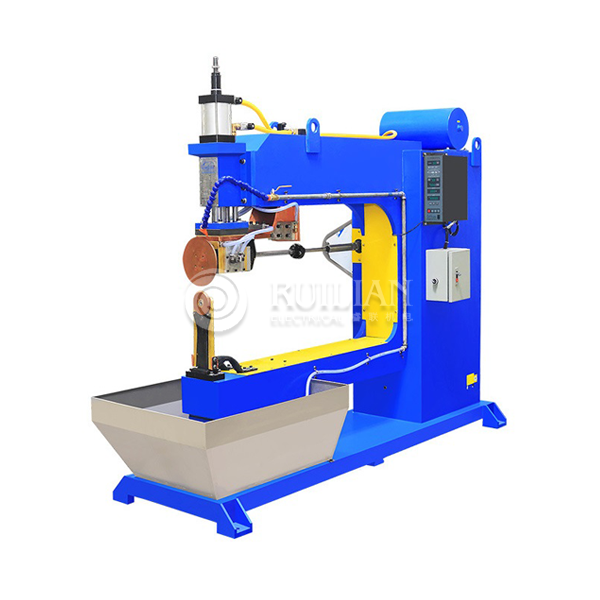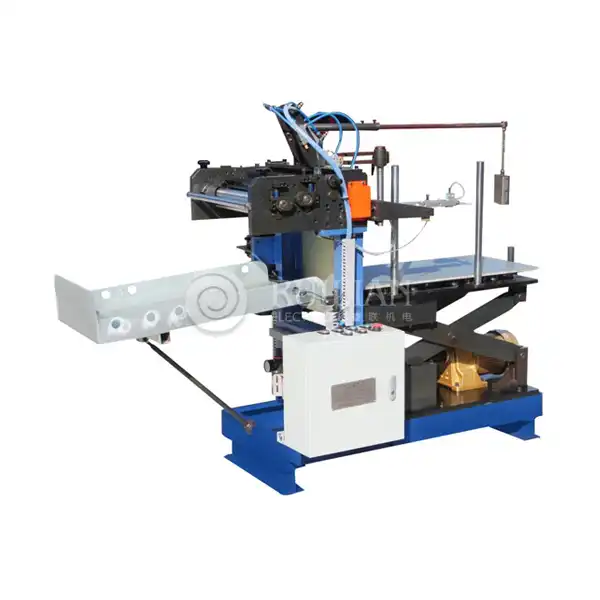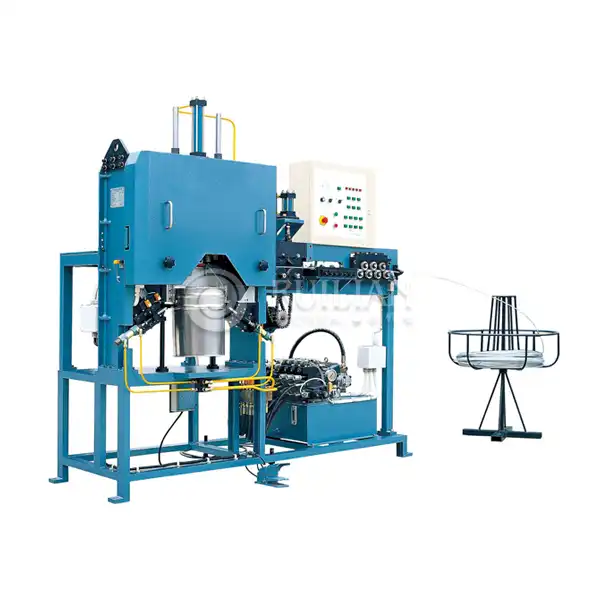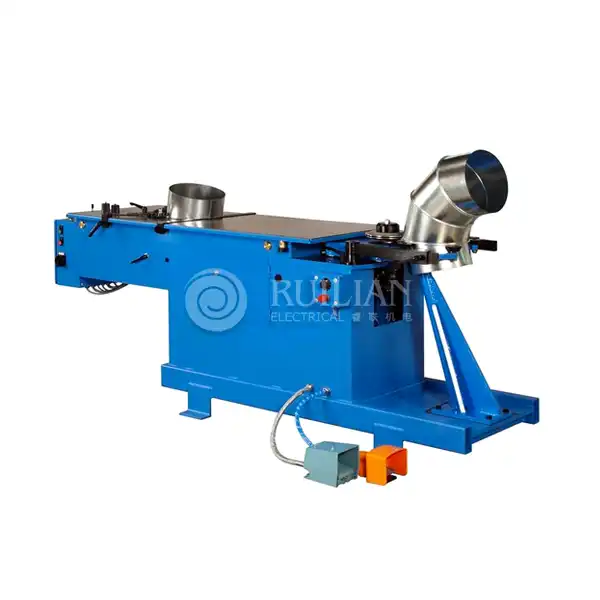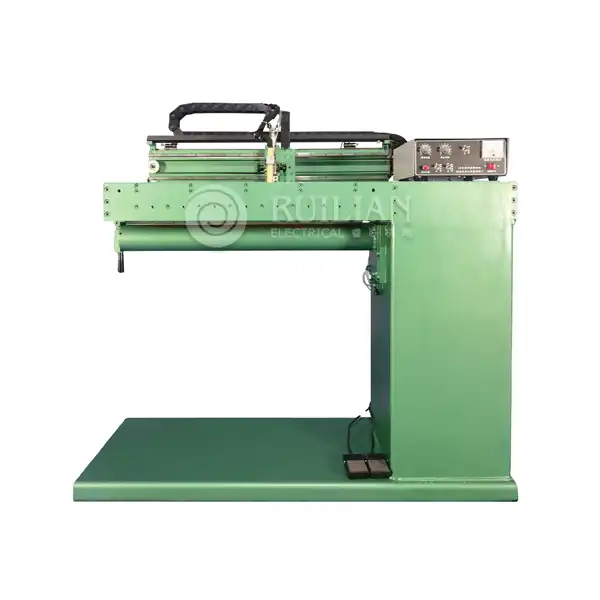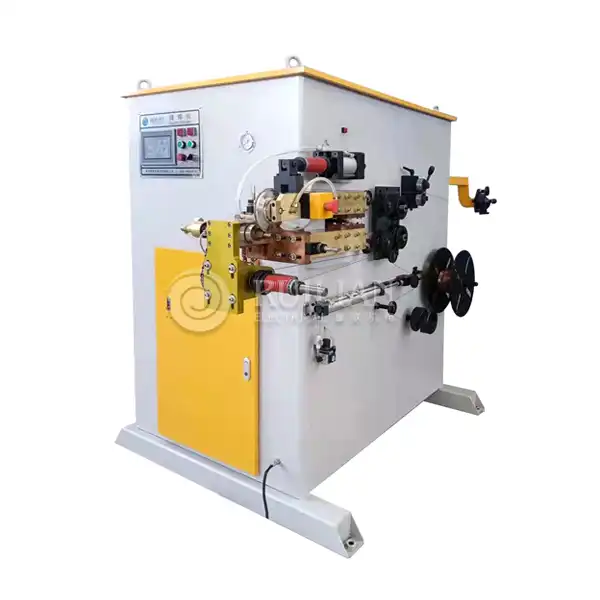Steel Drum Manufacturing: A Perfect Match for Rear Entry Resistance Welding
One of the most prominent applications of rear entry resistance welding machines is in the production of steel drums. These cylindrical containers are ubiquitous in many industries, used for storing and transporting various materials, from chemicals to food products. The rear entry design of these welding machines is particularly advantageous in drum manufacturing for several reasons:
- Seamless Welding: The rear entry configuration allows for continuous welding of the drum's body seam. This results in a strong, leak-proof container that can withstand the rigors of transportation and storage.
- Efficient Production: By enabling easy access to the welding area, rear entry machines facilitate faster production cycles. Operators can quickly load and unload drums, reducing downtime between welds.
- Consistent Quality: The precise control offered by resistance welding ensures uniform weld quality along the entire length of the drum seam. This consistency is crucial for maintaining the integrity of the container.
- Versatility: Rear entry resistance welding machines can accommodate drums of various sizes and thicknesses, making them suitable for producing a wide range of steel drum products.
The ability to produce high-quality steel drums efficiently has made rear entry resistance welding machines a staple in the packaging industry. These machines contribute significantly to the production of safe, reliable containers used across multiple sectors, from petrochemicals to food processing.
Automotive Industry: Enhancing Vehicle Component Production
The automotive sector is another major beneficiary of rear entry resistance welding technology. These machines play a crucial role in manufacturing various vehicle components, contributing to both structural integrity and aesthetic appeal. Some key applications in the automotive industry include:
- Fuel Tank Production: Similar to steel drums, fuel tanks require precise, leak-proof welds. Rear entry resistance welding machines excel in creating the longitudinal seams of these tanks, ensuring they meet stringent safety standards.
- Exhaust System Components: Mufflers, catalytic converters, and other exhaust system parts often require cylindrical welding. The rear entry design allows for efficient production of these components, maintaining consistent weld quality.
- Body Panel Reinforcements: Certain structural elements of vehicle bodies benefit from the precise, controlled welds provided by rear entry resistance welding machines. These welds contribute to the overall strength and safety of the vehicle.
- Wheel Manufacturing: Some types of wheel production, particularly for commercial vehicles, utilize rear entry resistance welding for joining rim components.
The automotive industry's demand for high-quality, consistent welds in cylindrical and tubular components has made rear entry resistance welding machines an invaluable asset in vehicle manufacturing processes. These machines help automakers meet strict quality standards while maintaining efficient production rates.
Home Appliance Manufacturing: Precision and Efficiency Combined
The home appliance industry is yet another sector where rear entry resistance welding machines have found significant applications. These machines contribute to the production of various household items, ensuring both functionality and durability. Some notable uses in this industry include:
- Water Heater Tanks: The production of water heater tanks requires precise, leak-proof welds. Rear entry resistance welding machines are ideal for creating the longitudinal seams of these tanks, ensuring they can withstand high pressure and temperature variations.
- Washing Machine Drums: The inner drums of washing machines need to be sturdy and water-tight. Rear entry resistance welding machines provide the necessary precision and strength for these critical components.
- Air Conditioner Components: Certain parts of air conditioning systems, such as compressor shells or refrigerant tanks, benefit from the controlled welding process offered by rear entry machines.
- Small Appliance Casings: For appliances like blenders or food processors, rear entry resistance welding can be used to join cylindrical casings or motor housings.
In the home appliance sector, rear entry resistance welding machines contribute to the production of durable, high-quality products that consumers rely on daily. The precision and efficiency of these machines help manufacturers meet the growing demand for reliable household appliances while maintaining competitive production costs.
Rear entry resistance welding machines have proven to be versatile and efficient tools in various manufacturing sectors. From steel drum production to automotive components and home appliances, these machines offer unique advantages that make them indispensable in modern industrial processes. Their ability to provide consistent, high-quality welds in cylindrical and tubular components has made them a preferred choice for manufacturers seeking to improve product quality and production efficiency.
As manufacturing technologies continue to evolve, rear entry resistance welding machines are likely to find even more applications across different industries. Their adaptability to various materials and sizes, combined with the precision and speed they offer, ensures that these machines will remain a crucial part of manufacturing processes for years to come.
If you're interested in exploring how rear entry resistance welding machines can benefit your manufacturing processes, or if you need expert advice on welding solutions, don't hesitate to reach out to RUILIAN. Our team of specialists is ready to assist you in finding the perfect welding solution for your specific needs. Contact us at ry@china-ruilian.cn or visit our website at www.rlseamwelding.com to discover our range of welding machines and application solutions.


